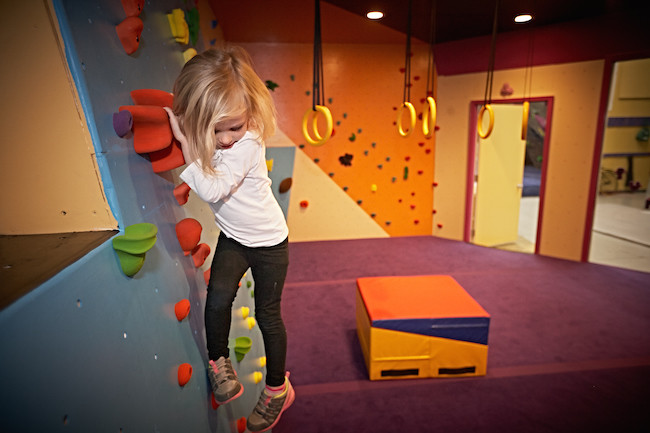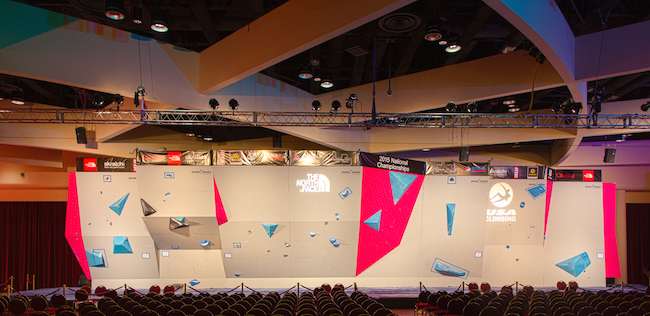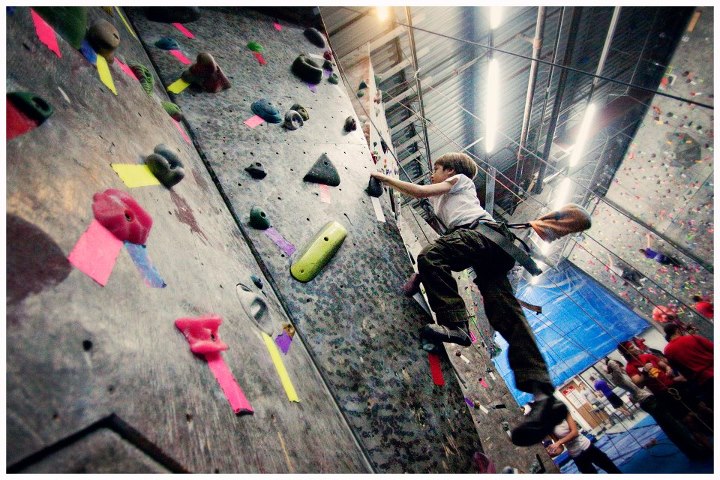“Ever seen a failed Gri Gri? Not many have. In fact when I emailed Petzl they said that they had never encountered a failure like this one. I just discovered this Gri Gri failure during routine safety checks this last month. Albeit rare, it’s still a good reminder to keep up on safety checks, always use good belay technique, and put safety backup knots in the tail end of the rope when working on a rope route setting. For reference this one was used on a kids wall top rope anchor it’s whole life (date stamped 2006).”
Video: Failed Petzl Gri Gri
A video posted to the Routesetters Anonymous Facebook page shows a Petzl Gri Gri found during a routine equipment check that no longer functions correctly.
USAC and Entre-Prises Extend Partnership at Nationals
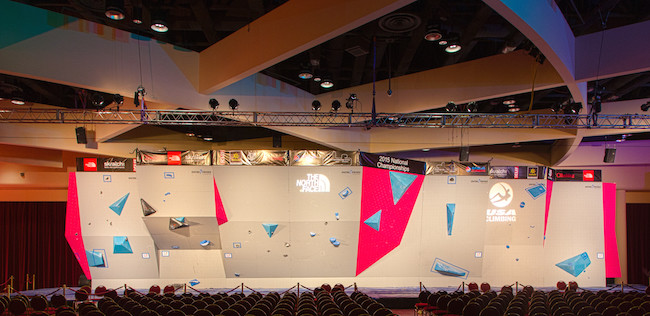
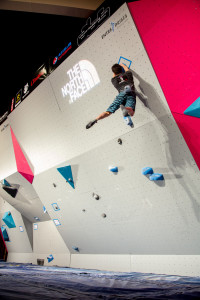
Wall Design
The design of the new wall has been a closely held secret with no photos or wall renderings released before last week’s event. Along with EP’s in-house design guru, Grant Ortman, USAC enlisted the creative talents of Chris Danielson, an international routesetter and climbing wall design consultant, to come up with a competition wall that would test the climbers on all skill sets. “The three main wall types (low angle, slight, steep) and the variable configurations can help us test climbers across as many diverse styles as possible,” said Danielson. “It helps us give them the opportunity to demonstrate their unique skills.” Danielson has helped design a number of commercial climbing facilities including Sender One’s Santa Ana and LAX facilities in California, Ascent Studio in Ft. Collins, CO, Vertical Adventures in Columbus, OH, and Stone Gardens in Bellevue, WA. He has also honed his design chops over multiple iterations of USAC comp walls: from the original Pyramid wall used at UBC events and the Vail World Cup from 2008 – 2011, to both versions of EP’s bouldering wall. EP’s new wall is a refinement of the previous bouldering wall, which was used from 2012 to 2014 at ABS Nationals and the Vail World Cup. “Whereas the original EP wall was one of greater extremes, with big slabs and massive steep bays, the new wall is intended to balance out those extremes with more mid-range overhanging options,” Danielson said. For EP’s Todd Chester, the largest difference between this year’s and last year’s wall is the addition of “adjustable sections and ensuring everything is interchangeable with the previous wall,” he said. “This allows the diversity for different skill levels, scaleable to the event needs and continues to prioritize install and disassembly times.” Danielson, who was also on this year’s ABS Open Nationals routesetting crew, believes the wall is as important as the holds and the volumes used. “It is just as integral to the feeling of a competition and the results it creates as any other element of the equation,” he said. “But considering the walls or the actual routesetting, we are not determining the outcome of the competition but rather creating situations that challenge the climbers to manifest their own results.”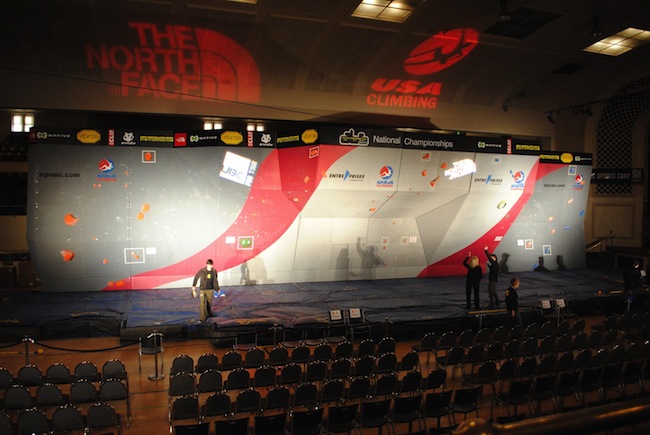
The Two Shall Meet
Even though USA Climbing has a new bouldering wall, that doesn’t mean it’s time to retire the old EP wall. The original wall will be re-paneled with the light grey and pink color scheme that is used on this year’s wall, and it will be given a fresh coat of EP’s new wall texture. USAC’s Waggoner said they have no intention of selling the old wall. Instead they will keep the wall for future events. “We will have an infinite amount of different wall angles and orientations to choose from when we next host an event,” Waggoner said.Adaptive Climbers Compete at ABS Open
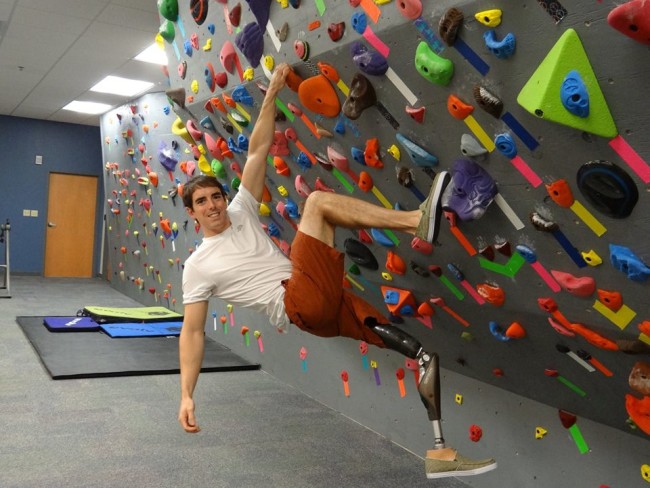
Vertical Adventures Teams With ABC on Training Center
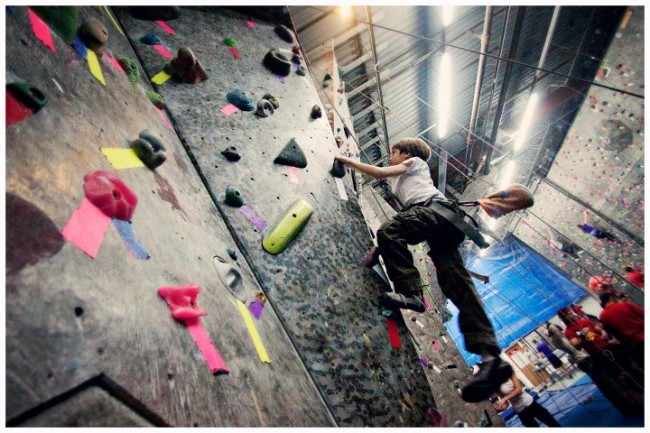
From Old to New
Climbing teams are gaining popularity and growing bigger every year. As attendance rises these teams put additional pressure on their host gyms. Youth competitors need space on the wall and on the ground to train for upcoming competitions, and the more space they occupy the less space is available to regular members. “Our youth program continues to explode. For the last two sessions, every class we’ve offered has filled. When we’ve added more classes, they’ve filled, too,” Roberts said. “There is always tension between program-and membership-based business that makes keeping up with that growth difficult.”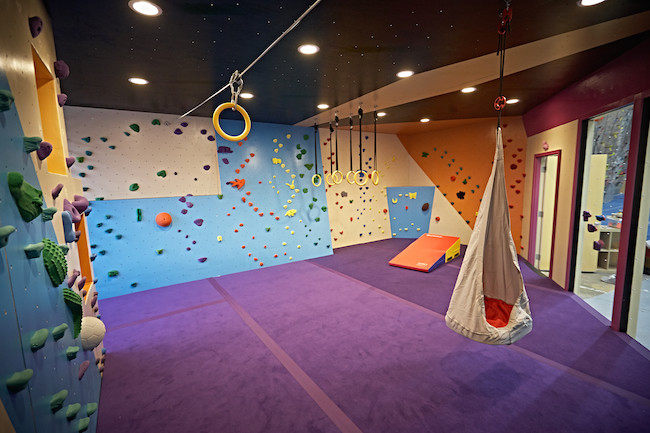
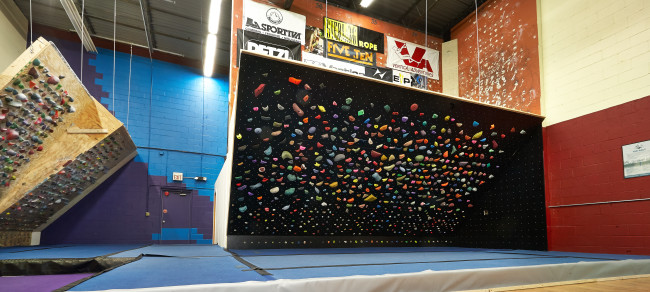
Enter ABC
The new VA training center is only the third dedicated climber training gym in the USA. As such the VA team knew they needed to make sure they were doing everything they could to make it a success. So they enlisted the help of ABC Kids Climbing out of Boulder, Colorado. ABC Kids Climbing was created in 2004 by Coach Robyn Raboutou and is quickly becoming a dominating force on the youth comp circuit. ABC Kids licenses their training curriculum to Momentum in Utah and Planet Rock in Michigan. Vertical Adventures is the newest facility to sign on with ABC. According to JoAnne Carilli-Stevenson, ABC Kids Marketing Director, the license includes, “The brand, facility design, staff training and comprehensive curriculum for all pre-school and early elementary classes.”